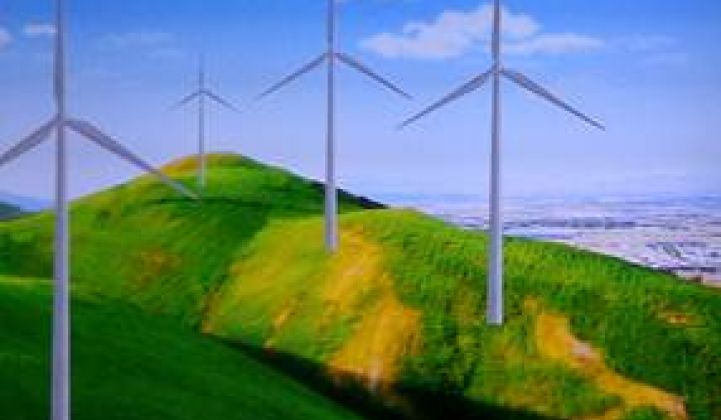Using Microsoft’s Kinect technology, wind maker GE Energy and software developer Infusion partnered to create a new Xbox 360-type gesture-driven interactive interface and colorful presentation through which users can experiment with some of the choices involved in building a wind project.
GE Energy, the leading U.S. wind turbine manufacturer, has progressively expanded its horizons over recent years in response to advances in the wind industry.
When technology offered the opportunity to build bigger, GE came up with a 2.5-megawatt, on-land machine. When the wind industry began moving offshore, GE built a 4.1-megawatt turbine.
More recently, GE advanced the technology’s capability at harvesting lower wind speeds with its 1.6-megawatt design.
_540_449_80.jpg)
When turbine warranties began expiring, GE broadened its operations and maintenance activities.
Now, with congressional opposition to wind energy’s vital production tax credit (PTC) and public hostility to turbines threatening to impede wind’s growth, GE Energy has come up with a way to make wind more user-friendly. Unveiled at the American Wind Energy Association’s WINDPOWER 2012, the new interactive game may soon turn up at a mall or on a website near you.
As shown in the video, hand gestures allow a would-be wind farm builder to choose between project sites in the onshore highlands, the onshore lowlands or offshore.
_540_449_80.jpg)
Next, again using hand gestures, the operator opens a display of GE Energy’s turbine armada and selects from among them between the 1.5-megawatt, 1.6-megawatt, 2.5-megawatt, 2.75-megawatt and 4.1-megawatt turbines.
Finally, the project is built by positioning, with hand and arm gestures, each turbine in the virtual development.
Once the project is complete, the developer creates a wind to see how the project produces. Standing in front of the screen, the owner-operator waves his or her arms to create the simulated wind.
_540_449_80.jpg)
As the wind blows, a display at the bottom of the screen shows how many average U.S. homes are being powered, how much fuel is being saved by the wind farm’s output, and how many tons of greenhouse gases are being avoided.
Following this virtual-world wind-powered generation time, the developer gets an on-screen data feed of the project’s output. The program tells her the average wind speed created, the annual output in kilowatt-hours would be for the wind farm, how many homes could be powered and how much carbon dioxide could be avoided.
The display was conceived as a sales and educational tool for customers and company employees, explained GE Energy Communications Director Lindsay Theile.
But Theile noted that the game’s appeal has raised the possibility of wider exposure. Through consumer outreach at public events and/or through an interactive online website, it could serve to teach the broader public more about the concerns and benefits of building wind.



